Gauging cashflow from a potential Bitcoin mining deal is easier than you think. It’s WAY easier and less risky than trying to gauge cashflow from a gold mine that is 3-5 years away from producing a single ounce.
But before I begin, I should tell you that understanding the analytics behind evaluating Bitcoin miners is going to very important in the next two months to one year. I am aware of at least two Bitcoin miners that will go public in Canadian markets sometime in 2018 and I will be covering them (and investing in them if I can) quite heavily.
One of them is DMG Blockchain Software Group. The other (I think) will be Cryptoglobal. Both will be building Bitcoin data centres in Canada, a country with inherent advantages for cryptocurrency miners (and I will get into that later).
If it’s true that China is kicking out their cryptocurrency miners, I think it’s most likely that a lot of the mining will shift to Canada and investors will see more cryptocurrency mining deals come to the public markets.
Key Metrics
To calculate cashflow you need know the following:
- Price of Bitcoin
- Hash Difficulty rate for Bitcoin
- Kilowatt per hour that the miner is paying for electricity.
- Hash rate of the Bitcoin miner/data centre.
- Wattage of the Bitcoin miner
- Cost of equipment.
Let’s look at each of these items in turn. The first, the (1) price of Bitcoin, is easy to find. You can see today the price of Bitcoin is $7151 USD:
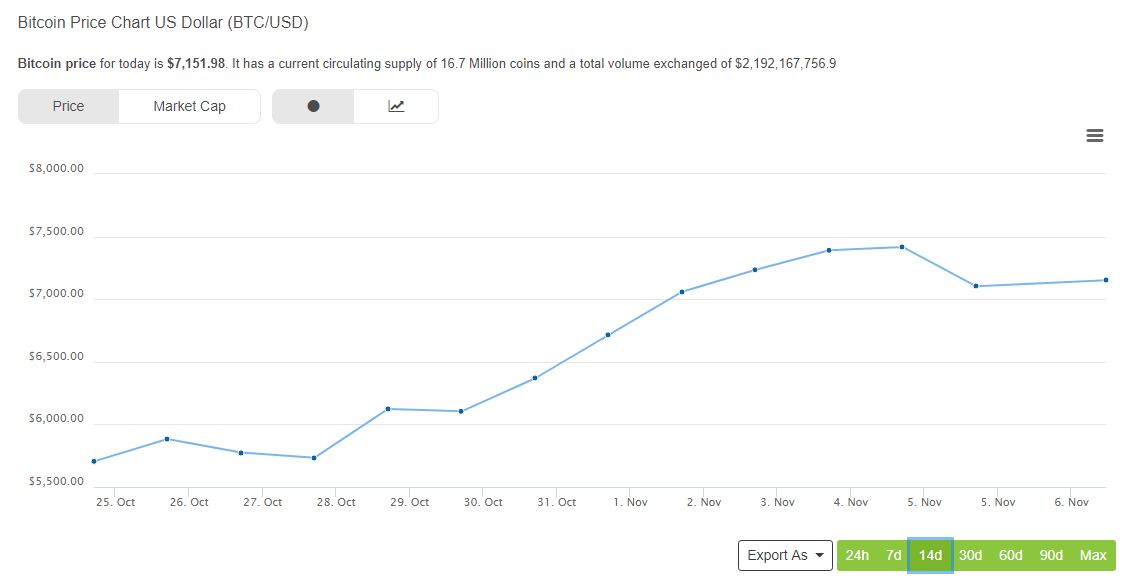
Chart from CoinGecko.com
(2) Hash difficulty rate is also easy to find, as blockexplorer.info tracks that information. The hash rate today is 10 million TH/s, down from a peak of nearly 12 million TH/s but trending up.
If you don’t know what hash rate means, it’s essentially the sum of all computing power on the Bitcoin network:
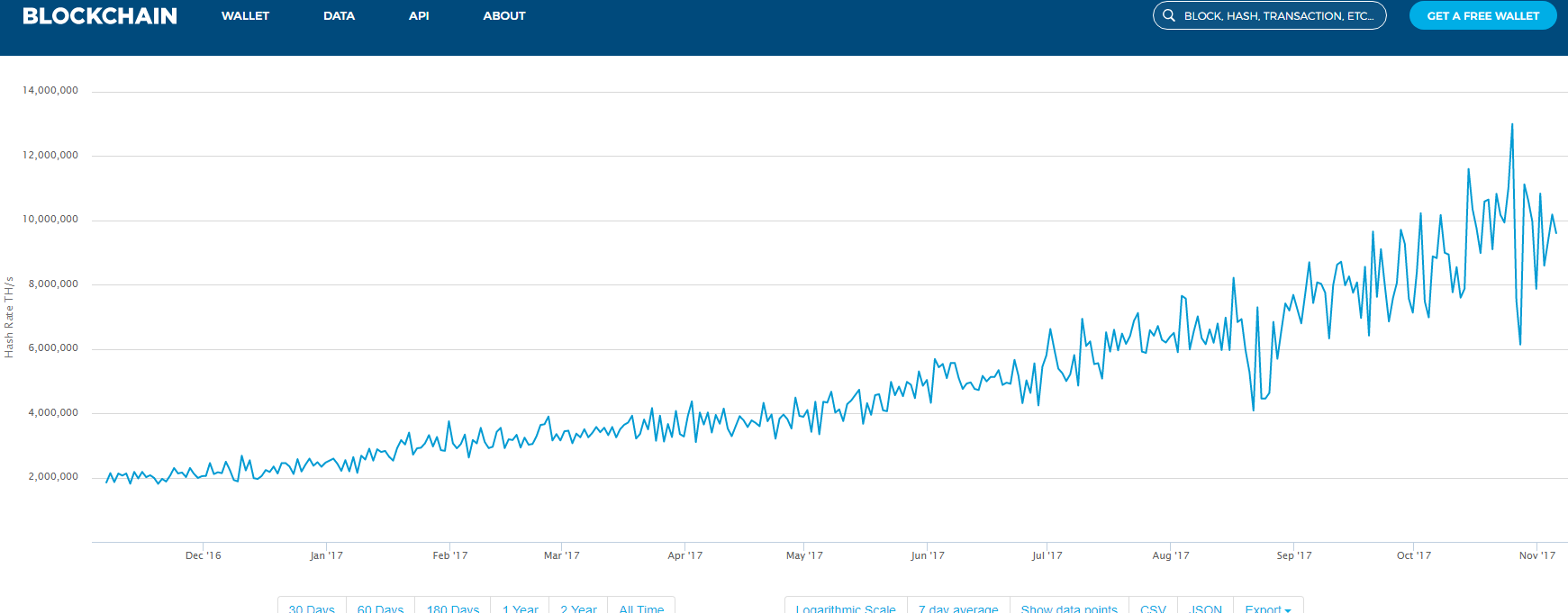
The third data point we need to find is (3) Kilowatt per hour that the miner is paying for electricity. This is very important so it has to be somewhere in the prospectus. If the company has landed a sweet deal for electricity and doesn’t want to make it public, then at very least the prospectus should provide guidance such as “lower than 10 cents a kilowatt hour” or around 8 cents etc.
No guidance on electricity rates is a big red flag.
The fourth thing we need to discover is the (4) Hash rate of the Bitcoin miner/data centre, and here is where we get to play Sherlock. The total hash power will tell you how much Bitcoin the data centre is capable of mining on a monthly, weekly or even daily basis. But I have yet to see a prospectus that discloses total hash power of a data centre.
Instead, a number you might see is the total number of Bitcoin mining rigs that have been/will be purchased by the company. Using the manufacturer’s specifications, you can find out the rest of the information you need. Let me show you an example.
The current workhorse of the Bitcoin mining community is the AntMiner S9. It’s the favourite mining rig for the data centres as it has the best operating efficiency at 0.098 watts per Gigahertz (the lower the better).
The (4) hash rate of the Antminer S9 is 13.5 TH/s and it consumes (5) 1400 watts.
Now the last thing we need to discover is how much was paid for the mining rig. There are two prices we need to consider and both are important. The first the listed price of the rig which for the Antminer S9 is here, $1415 for a rig that is shpping in December. It is unlikely that is the price that the company is paying.
Mining rigs depreciate quite quickly WHY and a rig that can be delivered tomorrow is considerably more valuable than a rig that won’t be delivered for two months (if you are lucky).
To get an idea of the current market price, you need to go to Ebay to look for Antminers.
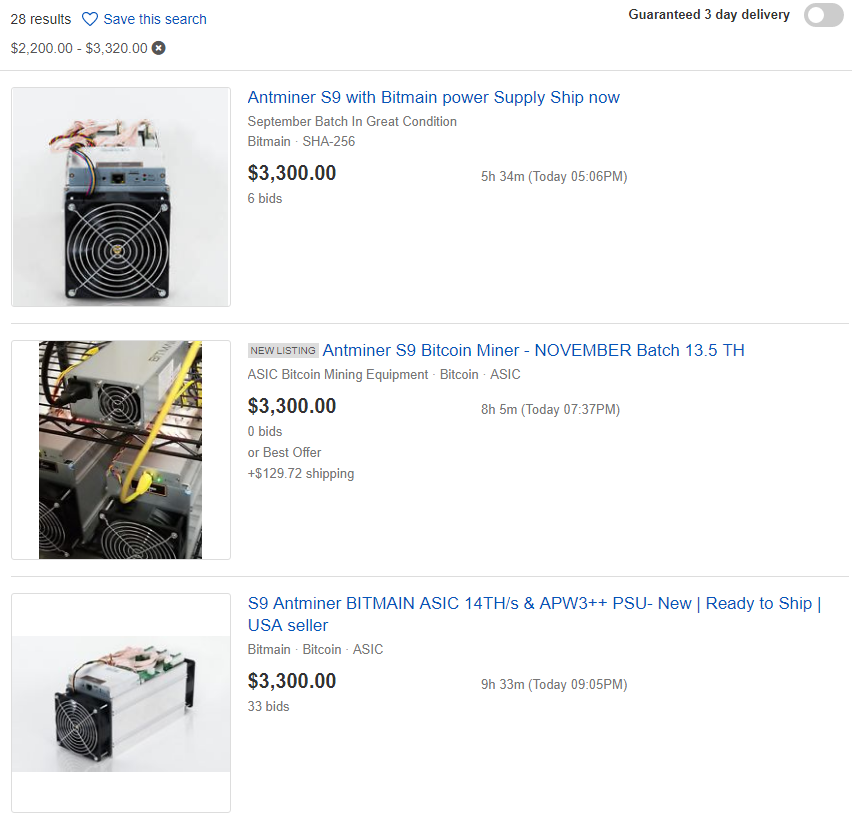
So the street price of an Antminer S9 is $3000 and the wholesale price is $1415. Now the company management team won’t tell you what they paid (except to say they got a good price) so it’s time to stick a wet finger up in the air and guess that the cost of each miner was $2200.
Now you only need one more thing to complete your financial analysis and that’s a Bitcoin mining calculator. You can google that term, there’s are tons of them on the web.
I used cryptcompare to make my calculations:
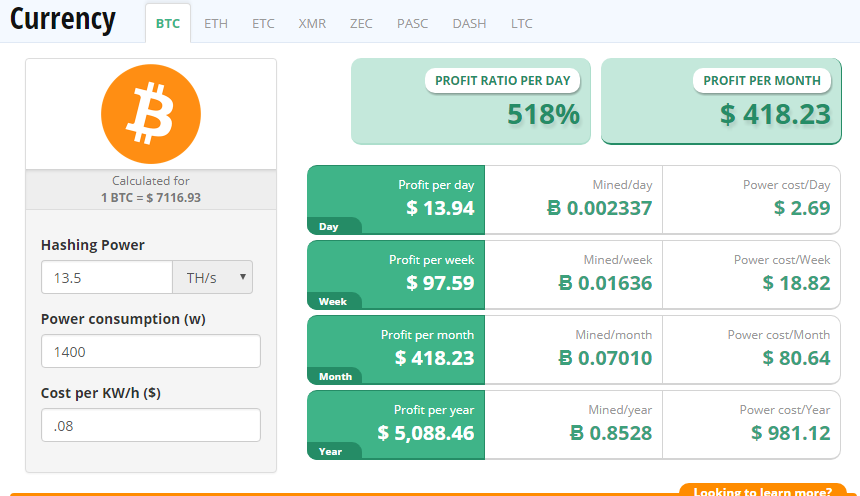
And there you go. Let’s say you are looking at a deal that involves a data centre with 1000 mining rigs. Each one makes $420 a month so the datacentre will throw off a monthly cash flow of $420,000 or $5,040,000 USD a year. Cost of the rigs is $2,200,000 so they are paid off in less than six months.
Finally, what is the cost of the datacentre excluding the servers? There is actually a lot of websites on the internet that talk about datacentre costs. This page here says the cost of a small data centre runs about $2.3 million.
Therefore, you are looking at the datacentre plus the rigs being paid off in less than one year. It looks very attractive, so attractive in fact you need to go back and question your assumptions.
You Are Not Done Yet
Electricity costs are critical. If the datacentre is paying 15 cents an hour instead of 8 cents then profit per month is $330 instead of $400. Conversely, if they can get it down to 5 cents USD then profit zooms up to $430.
Where is the price of Bitcoin going? If Bitcoin hits $8000 sometime in 2018, then obviously profit goes up. Where is the network hash rate going? Historically it has always gone up. If (and that is a big if) it continues at it’s historical rate, then you need to take that into account.
Another calculator that take historical hash rate inflation into account is this one from Buybitcoinworldwide.com
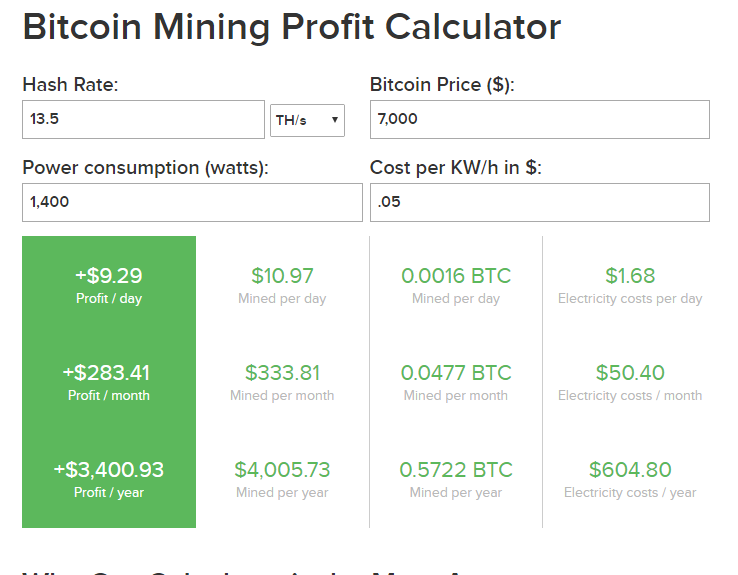
The numbers look less impressive when considering the historical hash rate inflation. Now you are looking at a yearly cashflow of $3,400,000 instead of $5 million.
HOWEVER that calculator makes the assumption that the Bitcoin price will stay at the same price the whole year. If the price of Bitcoin zooms up to $10,000 then the numbers look better again:
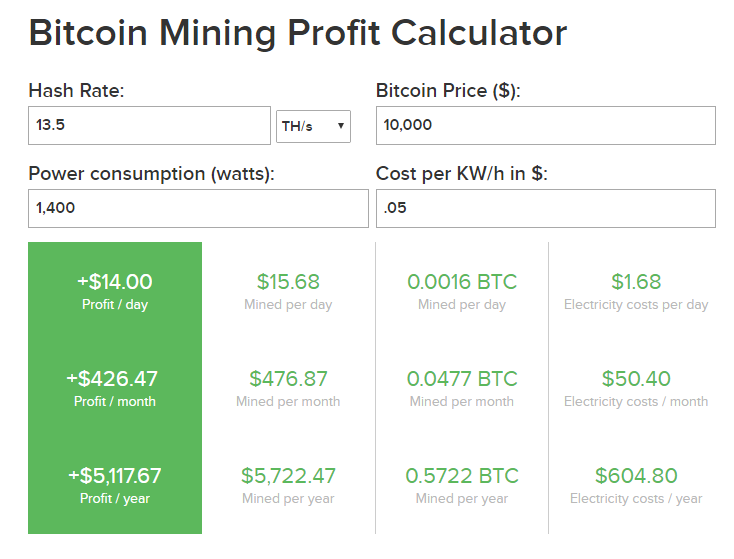
Finally, it’s good to know what happens if Bitcoin crashes: Using the most pessimistic calculator, the price of Bitcoin would have to crash to $1500 before the mining rigs become cash-flow negative.
Conclusion
Assuming historical hash rate inflations and assuming Bitcoin hits $8000 by mid-2018, you are looking at payback for the whole data in a little over one year. Then, making the very conservative assumption that the rigs must all be replaced in one year, the net revenue per 1000 rigs would be $2 million.
But there can be a host of other factors to consider.
I have yet to see a “pure” Bitcoin mining deal. DMG is planning to lease out their rigs and offer other blockchain related services. Cryptoglobal plans to mine other coins including DASH which is insanely profitable at present (payback on rigs in less than 3 months).
The raw cashflow numbers should give you a ballpark estimate of how much free cash the datacentre should throw off as soon as it is operational.
If you keep an eye on the Bitcoin hash rate, you can easily estimate the cashflow of the data centre from month to month.
However, there is bad news for retail investors. Expect market valuations of these deals to be insanely high through 2018.
There is huge institutional demand for these deals so by the time the stock gets to the public market, expect a retail valuation of 20, 30, or even 50 times cashflow. I was not able to get any of the private placement paper for Crytoglobal and it was touch-and-go to get private placement stock on DMG.
So retail customers will end up paying, well, retails price for stocks in this companies. For example, that datacentre with 1000 rigs may easily get a valuation of $40 to $100 million US in today’s market.
But the good news is that ridiculous valuations can be justified by the ridiculous growth of the crypto-mining industry.
Industry revenue from Bitcoin mining is growing by 100% year over year meaning in five years, the industry could be larger than the gold mining industry.
So fabulous growths rate in an industry that generates positive cash flow from day one, in my mind, justifies a premium valuation.
The institutional buyers will be making a killing off my retail purchasing but I will be buying anyways.
By Ross Pilot
















